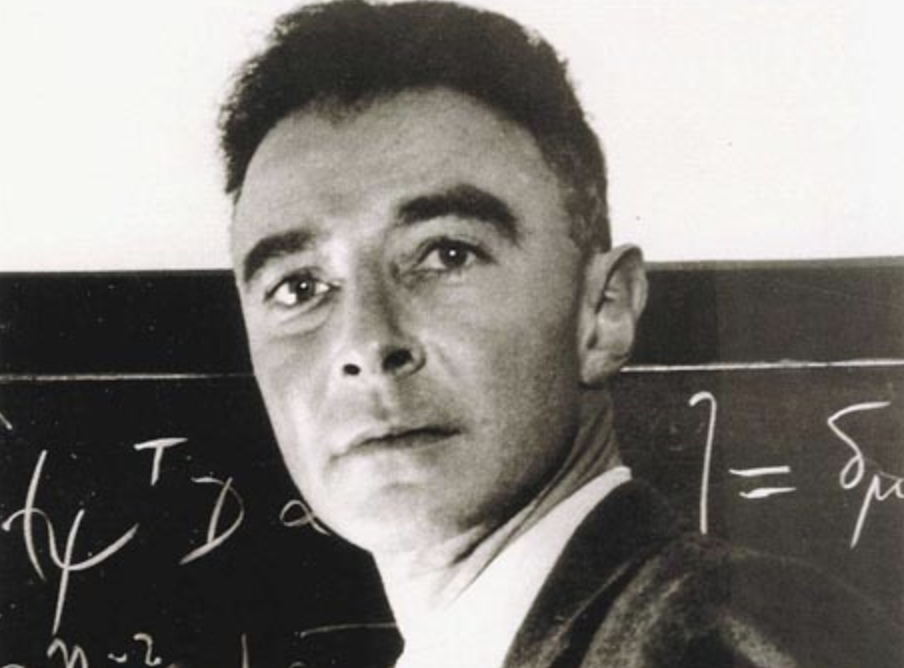No matter how little we know of the Hindu religion, a line from one of its holy scriptures lives within us all: “Now I am become Death, the destroyer of worlds.” This is one facet of the legacy of J. Robert Oppenheimer, an American theoretical physicist who left an outsized mark on history. For his crucial role in the Manhattan Project that during World War II produced the first nuclear weapons, he’s now remembered as the”father of the atomic bomb.” He secured that title on July 16, 1945, the day of the test in the New Mexican desert that proved these experimental weapons actually work — that is, they could wreak a kind of destruction previously only seen in visions of the end of the world.
“We knew the world would not be the same,” Oppenheimer remembered in 1965. “A few people laughed, a few people cried. Most people were silent. I remembered the line from the Hindu scripture, the Bhagavad Gita; Vishnu is trying to persuade the Prince that he should do his duty and, to impress him, takes on his multi-armed form and says, ‘Now I am become Death, the destroyer of worlds.’”
The translation’s grammatical archaism made it even more powerful, resonating with lines in Tennyson (“I am become a name, for always roaming with a hungry heart”), Shakespeare (“I am come to know your pleasure”), and the Bible (“I am come a light into the world, that whosoever believeth on me should not abide in darkness”).
But what is death, as the Gita sees it? In an interview with Wired, Sanskrit scholar Stephen Thompson explains that, in the original, the word that Oppenheimer speaks as “death” refers to “literally the world-destroying time.” This means that “irrespective of what Arjuna does” — Arjuna being the aforementioned prince, the narrative’s protagonist — everything is in the hands of the divine.” Oppenheimer would have learned all this while teaching in the 1930s at UC Berkeley, where he learned Sanskrit and read the Gita in the original. This created in him, said his colleague Isidor Rabi, “a feeling of mystery of the universe that surrounded him like a fog.”
The necessity of the United States’ subsequent dropping of not one but two atomic bombs on Japan, examined in the 1965 documentary The Decision to Drop the Bomb (below), remains a matter of debate. Oppenheimer went on to oppose nuclear weapons, describing himself to an appalled President Harry Truman as having “blood on my hands.” But in developing them, could he have simply seen himself as a modern Prince Arjuna? “It has been argued by scholars,” writes the Economic Times‘ Mayank Chhaya, “that Oppenheimer’s approach to the atomic bomb was that of doing his duty as part of his dharma as prescribed in the Gita.” He knew, to quote another line from that scripture brought to mind by the nuclear explosion, that “if the radiance of a thousand suns were to burst into the sky that would be like the splendor of the Mighty One” — and perhaps also that splendor and wrath may be one.
Note: An earlier version of this post appeared on our site in 2020. In the light of the new Oppenheimer film, we’re bring it back.
Related Content:
Oppenheimer: The Man Behind the Bomb
The “Shadow” of a Hiroshima Victim, Etched into Stone, Is All That Remains After 1945 Atomic Blast
Haunting Unedited Footage of the Bombing of Nagasaki (1945)
63 Haunting Videos of U.S. Nuclear Tests Now Declassified and Put Online
53 Years of Nuclear Testing in 14 Minutes: A Time Lapse Film by Japanese Artist Isao Hashimoto
Based in Seoul, Colin Marshall writes and broadcasts on cities, language, and culture. His projects include the book The Stateless City: a Walk through 21st-Century Los Angeles and the video series The City in Cinema. Follow him on Twitter at @colinmarshall, on Facebook, or on Instagram.
